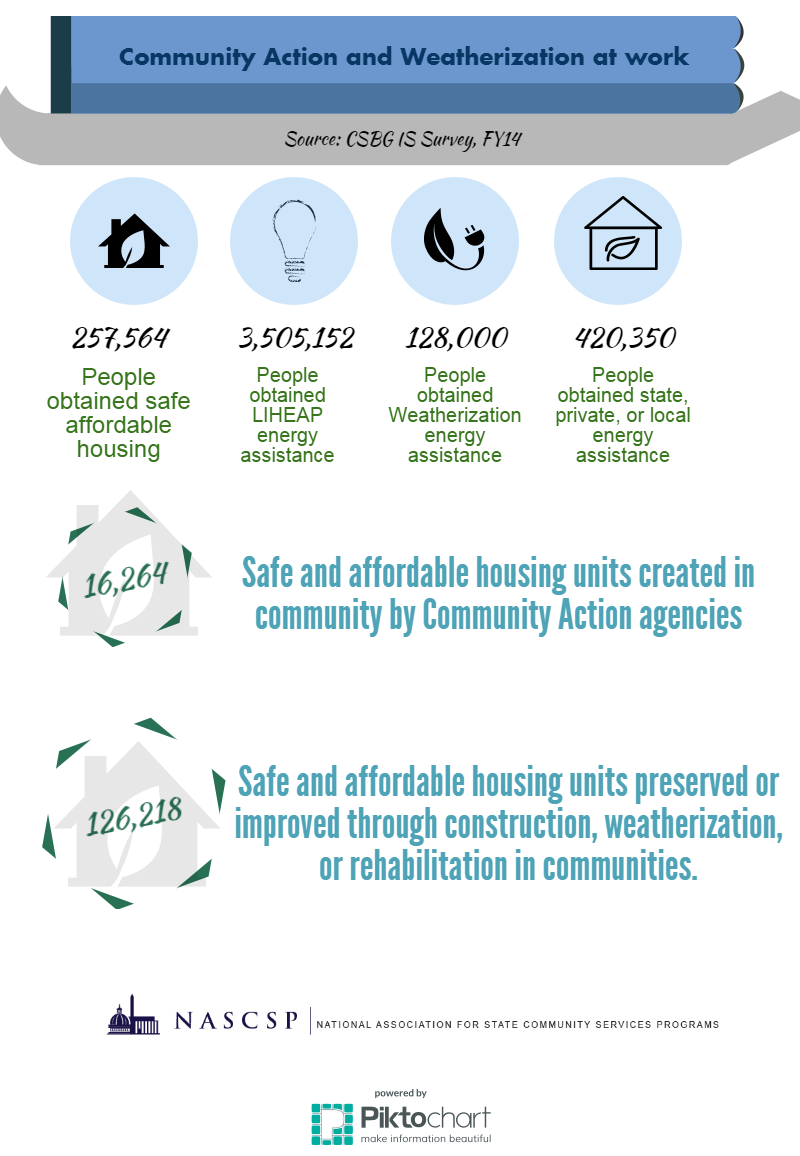By Quinton Young, Program Assistant
Community Action Agencies (CAAs) work across the United States and its territories to alleviate the causes and conditions of poverty in communities. Through the Community Service Block Grant (CSBG) and other grants, these agencies have the flexibility to provide innovative, flexible, and responsive programs and services to address the needs in their communities. While some CAAs provide services such as Head Start, job training, tax services, or financial literacy training, many CAAs focus on improving the standard of living for individuals with low incomes. These agencies help build and maintain safe and affordable housing, help to prevent foreclosures and evictions, provide mortgage, rent, and utility assistance, and ensure families are living in safe and healthy homes.
In 2014, over 1.9 million people turned to community action agencies for emergency energy assistance. Families with lower incomes are more vulnerable to energy costs than families with higher incomes because energy represents a larger portion of their household budgets. According to an American Coalition for Clean Coal Electricity study, households with low incomes are projected to spend 23% of their average after-tax income on energy. The emergency energy assistance provided by CAAs both stabilizes families in crisis and supports the overall well-being of the family.
In addition to providing emergency assistance, CAAs also administer two federal programs designed to assist families with energy costs and reduce the risk of health and safety problems: LIHEAP and Weatherization. The Low Income Home Energy Assistance Program (LIHEAP), administered through the Department of Health and Human Services, provides assistance with home energy bills, energy crises, and minor home repairs.
The Weatherization Assistance Program (WAP) is the Department of Energy’s core program for reducing energy cost for low-income families. Professional WAP technicians perform on-site home energy audits using state-of-the-art equipment to identify energy related issues. Crews make repairs to increase energy efficiency, including installation of insulation, sealing air leaks, or modifying existing heating systems. In the 39 years of the programs existence, over 7 million homes have been weatherized. In 2014, CAAs provided WAP assistance to 128,000 people. (Learn more about the human face of weatherization, and hear from a client how weatherization changed her quality of life.) The Weatherization program helps families reduce their energy bills, and also contributes to major health benefits, such as alleviating symptoms of asthma.
Community Action Agencies work with households across the nation to ensure that families and individuals are able to reduce their energy burden, freeing up money for other essentials like medicine and food. CAAs also work in communities to build and preserve affordable housing options. In 2014, 257,564 people gained access to safe and affordable housing nationwide. CAAs also built 16,264 housing units and improved 126,218 additional units through weatherization, construction, and rehabilitation, contributing to the overall value and quality of the housing stock, and increasing the number of safe and affordable places to live. CAAs work tirelessly to lower energy burdens, increase and maintain access to healthy homes, and ensure that communities continue to be safe and affordable.






